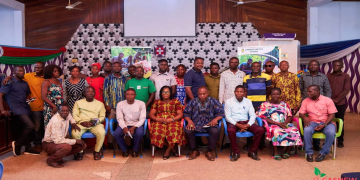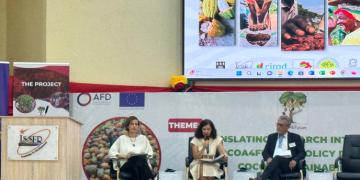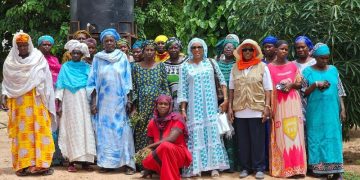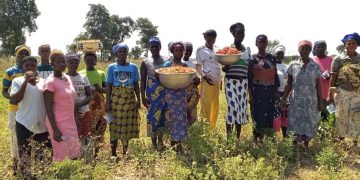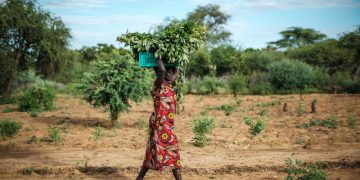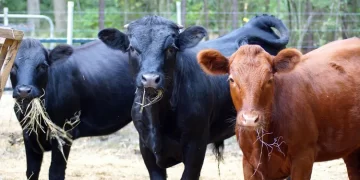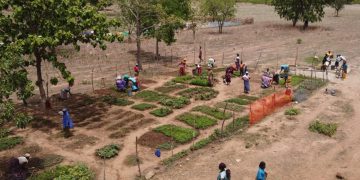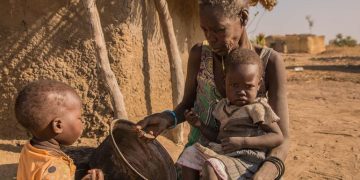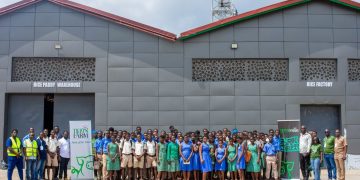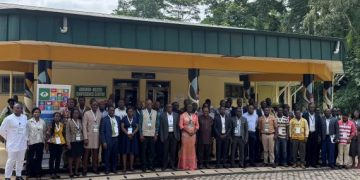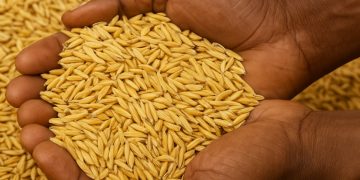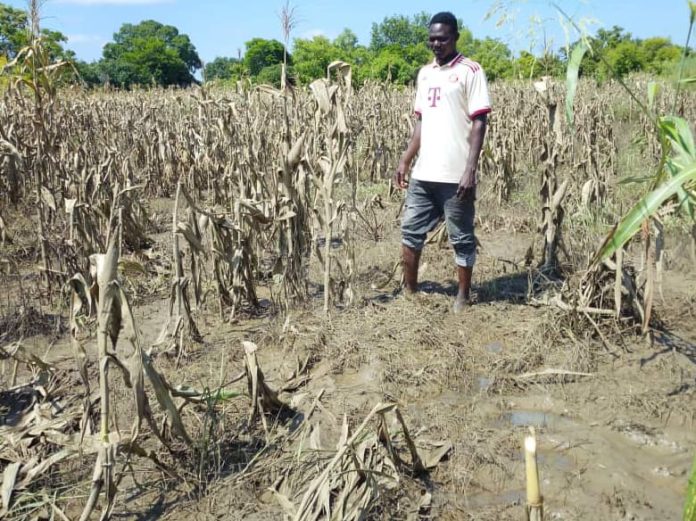In the Nungu community of the Talensi District, a 43-year-old farmer, Mr Awal Mustapha, stands helplessly at the edge of his once-thriving maize farm, gazing over the withered remains of his crops.
“Just a month ago, my farm was flourishing, the maize had tasselled and shown signs of a bountiful harvest, but the moment the Bagre Dam got spilled, the water ran to my farm and stayed for almost one week, causing my crops to wither prematurely,” he told the Ghana News Agency.
Mr Mustapha bemoaned that not only had he lost his crops, but he also was now in deep financial crisis, having borrowed to buy farm inputs.
“I planted maize and rice on 17 acres this year, and so I borrowed money from my community Village Savings and Loans Association to buy improved seeds and fertilizer, hoping to pay back after harvest, but now that I have lost everything, I am doomed and frustrated,” he stated.
Mr Mustapha’s story is not different from Mr Alhassan Yakubu, another farmer from the area who lamented that, “I couldn’t even recover half of the seeds I used in sowing, and so now the bigger headache is how to sustain my family until another season. It will definitely be hard for me, very hard, because I don’t have anything to do except farming.”
In Zebilla, a rice farmer, Ms Amina Bugri, lamented that her farm had been submerged, with a large portion of her rice crop washed away.
“I feel sorry for myself as a farmer today. This water from the Bagre Dam is more of a curse than a blessing. Our authorities appear not to have a solution, so every year we are hit by this crisis. It is not only farms along the riverbank; even those about 200 meters away are affected,” she said.
The above highlights the plight of thousands of farmers across the several districts in both the Upper East Region and North East Regions who live with the fear of losing their livelihoods whenever Burkina Faso announces the opening of the Bagre Dam.
The recurring floods have left many families with limited food and income, deepening the poverty levels in rural communities
An annual ordeal and adverse impact
Every August and September, farmers in Ghana’s Upper East and North East Regions brace themselves for the spillage of excess water from the Bagre Dam spillage in Burkina Faso.
Burkina Faso’s announcement of its intention to release excess water is usually followed by Ghanaian authorities issuing early warnings and urging residents to move to higher ground.
Despite these efforts, the outcome remains the same each year, as farmlands, crops, livestock, and sometimes lives are lost downstream.
In 2007, for instance, over 307,000 people were affected, 12,000 hectares of farmland destroyed, and the Upper East Region lost an estimated 144,000 metric tonnes of food crops, according to the National Disaster Management Organisation (NADMO).
In 2018, 17 lives were lost, 76,000 hectares of farmland destroyed, and Ghana recorded losses of over 127,000 metric tonnes of maize.
This routine repeated in 2020 as 10 lives were lost, 100 communities submerged, thousands displaced, and more than 76,000 farmlands wiped out.
According to a 2023 report by the Ghana Statistical Service (GSS), the Nabdam District in the Upper East Region has the highest rate of multidimensional poverty in Ghana, at 68.6 per cent.
This rate the GSS noted was about 11 times higher than the national average of 24.3 per cent and was substantially higher than other districts, such as the Asokwa Municipality, which has the lowest rate at 6.3 per cent. In the Upper East Region where nearly 90 per cent of the people depend on farming for their livelihood and the local economy is driven largely by agriculture; one would expect that access to necessities like food would be the least of their worries.
Hunger remains a persistent threat, particularly among subsistence farmers in the Talensi, Nabdam and Bawku West Districts, who cultivate along the channels of the White Volta River.
Year after year, the dreams of these hardworking men and women are drowned by the annual spillage of the Bagre Dam, and what should have been a season of harvest and celebration often turns into a season of despair, as floodwaters sweep through farmlands, leaving farmers with nothing but loss and frustration.
Mechanism to Limit Impact
Mr Edward Abugre Ayine, the Deputy Regional Director of the National Disaster Management Organisation (NADMO) in charge of Technical Operations in the Upper East Region, said in the absence of a permanent mechanism to control the spillage, precaution remained the only practical measure.
“At the moment, there is no better solution than precaution, and that is why we are urging farmers to always stay away from their farms and not farm on the riverbanks,” he stated.
Mr Donatus Atanga Akamugri, the Upper East Regional Minister, said the government is planning to construct mini dams along the river to help contain the excess water.
“For immediate relief, we have asked NADMO to prepare and dispatch relief items to affected communities. In the long term, we intend to build mini dams,” he said.
However, some experts are of the view that such interventions might not be sufficient to address the recurring problem.
Professor David Millar, a Development Consultant and Expert for the Pwalugu Multipurpose Dam project, said effective flood control required the construction of protective infrastructure.
“Robust flood control requires protective systems such as dikes, not just multipurpose dams,” he said.
Conclusion and Recommendation
The plight of Upper East farmers along the channels of the Bagre Dam underlines the urgent need for decisive action. Permanent flood-control systems such as dikes, embankments, and spillway diversions must be established to protect farmlands from perennial destruction as suggested by experts like Prof. Millar.
Beyond temporary relief, Ghana must accelerate the construction of the Pwalugu Dam while complementing it with irrigation schemes that can transform excess water into a productive resource rather than a recurring disaster.
At the same time, investments in early-warning and community resilience systems are critical. Farmers should not only be notified of impending spillage but also provided with the support to relocate or adapt their farming practices to withstand the impact.
Until decisive action is taken, faith remains the only dam strong enough to hold back the tide of despair and not worsen the plight of vulnerable farmers.











